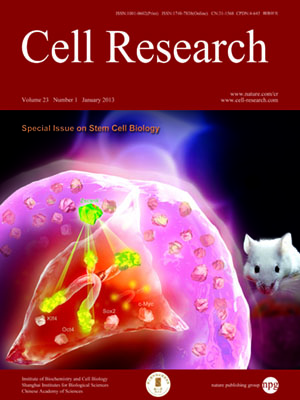
Volume 23, No 1, Jan 2013
ISSN: 1001-0602
EISSN: 1748-7838 2018
impact factor 17.848*
(Clarivate Analytics, 2019)
Volume 23 Issue 1, January 2013: 81-91
REVIEWS
Chemical approaches to studying stem cell biology
Wenlin Li1, Kai Jiang2, Wanguo Wei3, Yan Shi4 and Sheng Ding2
1Department of Cell Biology, Second Military Medical University, Shanghai 200433, China
2Gladstone Institute of Cardiovascular Disease, University of California, San Francisco, CA 94158, USA
3Stem Cell and Regenerative Medicine Center, Shanghai Advanced Research Institute, Chinese Academy of Science, Shanghai 201210, China
4Laboratory of Chemical Genomics, School of Chemical Biology and Biotechnology, Shenzhen Graduate School of Peking University, Shenzhen, Guangdong, 518055, China
Correspondence: Sheng Ding(sheng.ding@gladstone.ucsf.edu)
Stem cells, including both pluripotent stem cells and multipotent somatic stem cells, hold great potential for interrogating the mechanisms of tissue development, homeostasis and pathology, and for treating numerous devastating diseases. Establishment of in vitro platforms to faithfully maintain and precisely manipulate stem cell fates is essential to understand the basic mechanisms of stem cell biology, and to translate stem cells into regenerative medicine. Chemical approaches have recently provided a number of small molecules that can be used to control cell self-renewal, lineage differentiation, reprogramming and regeneration. These chemical modulators have been proven to be versatile tools for probing stem cell biology and manipulating cell fates toward desired outcomes. Ultimately, this strategy is promising to be a new frontier for drug development aimed at endogenous stem cell modulation.
Cell Research (2013) 23:81-91. doi:10.1038/cr.2012.182; published online 25 December 2012
FULL TEXT | PDF
Browse 3790


